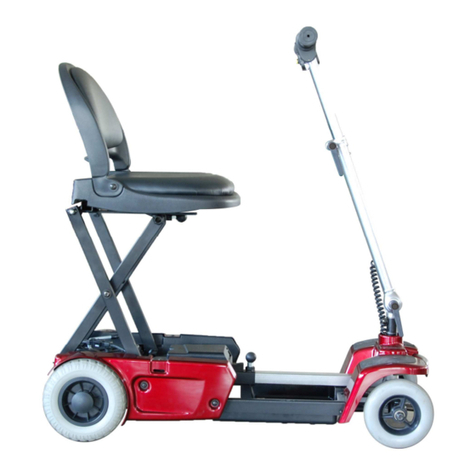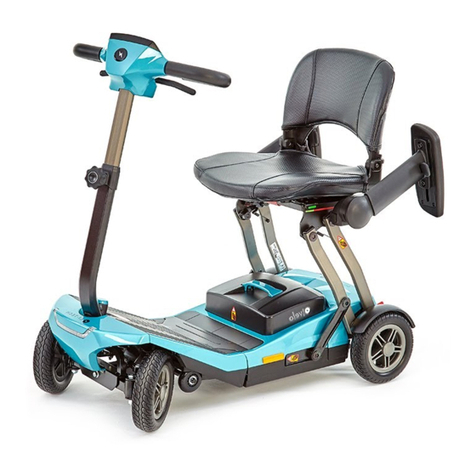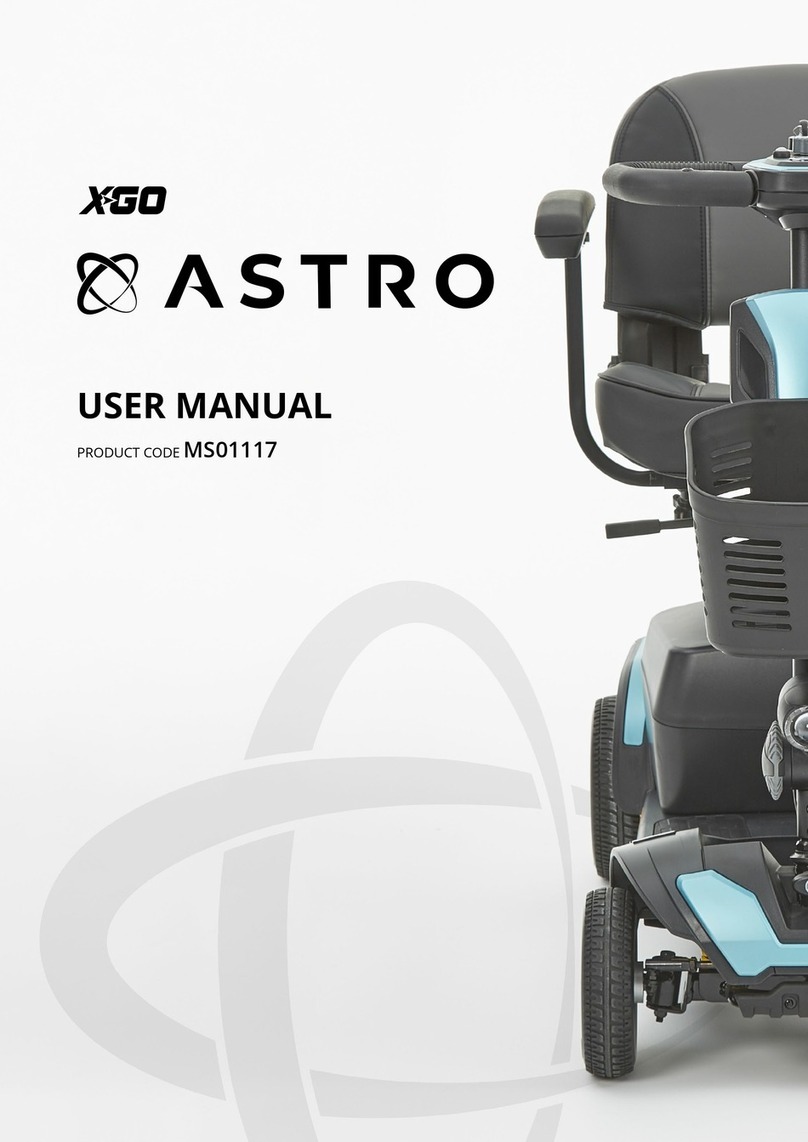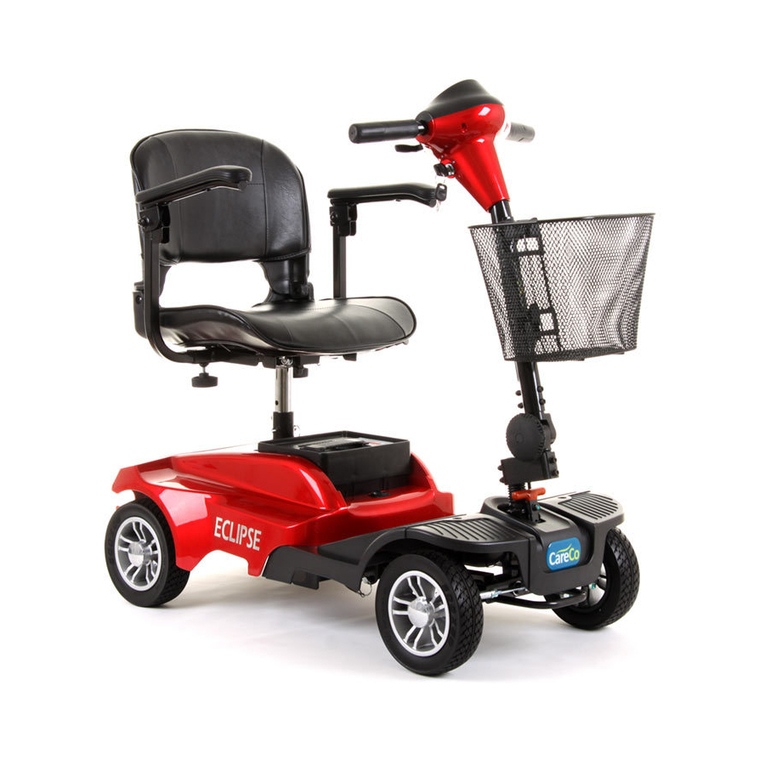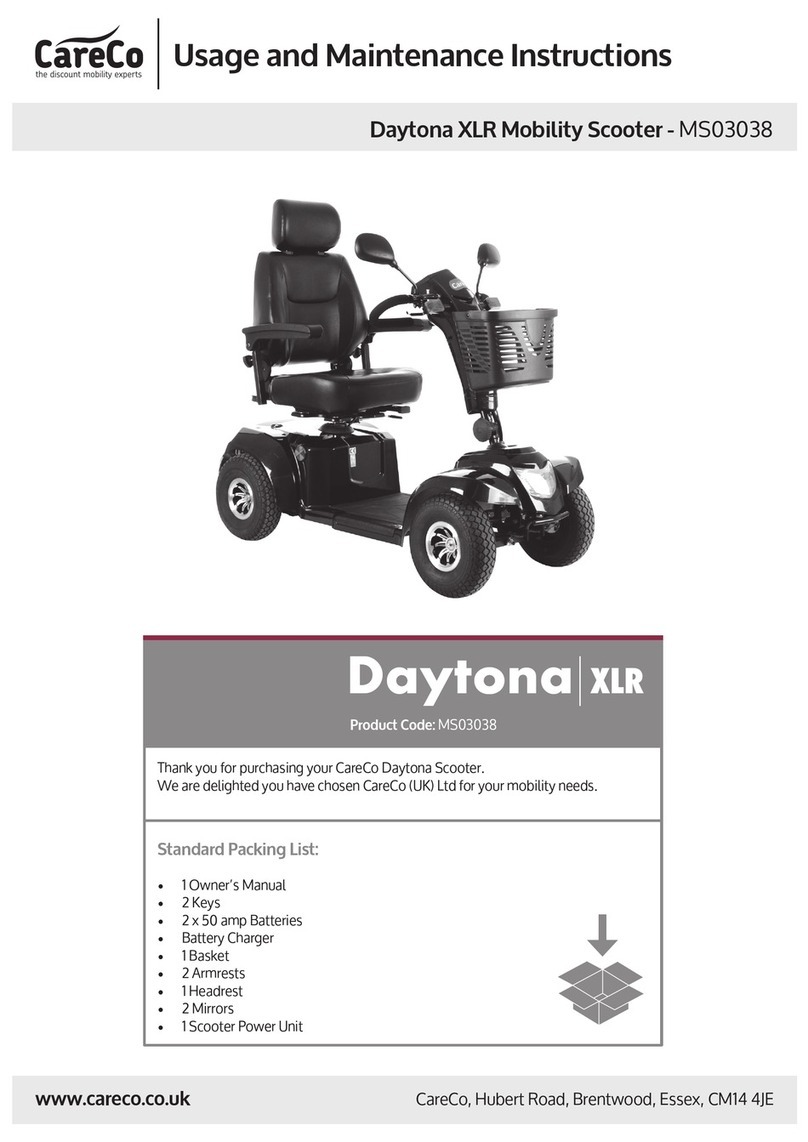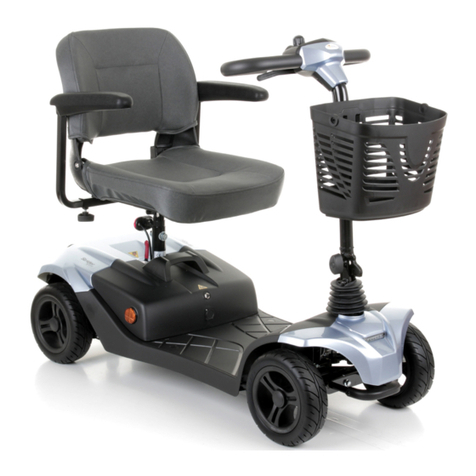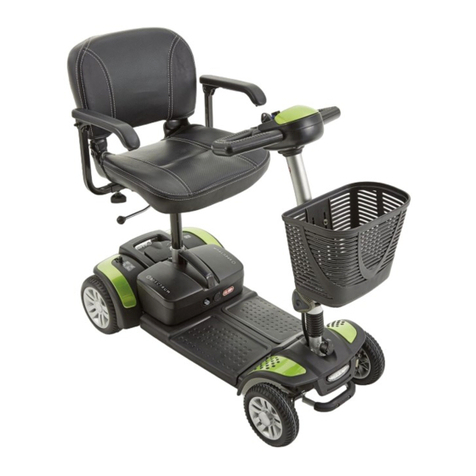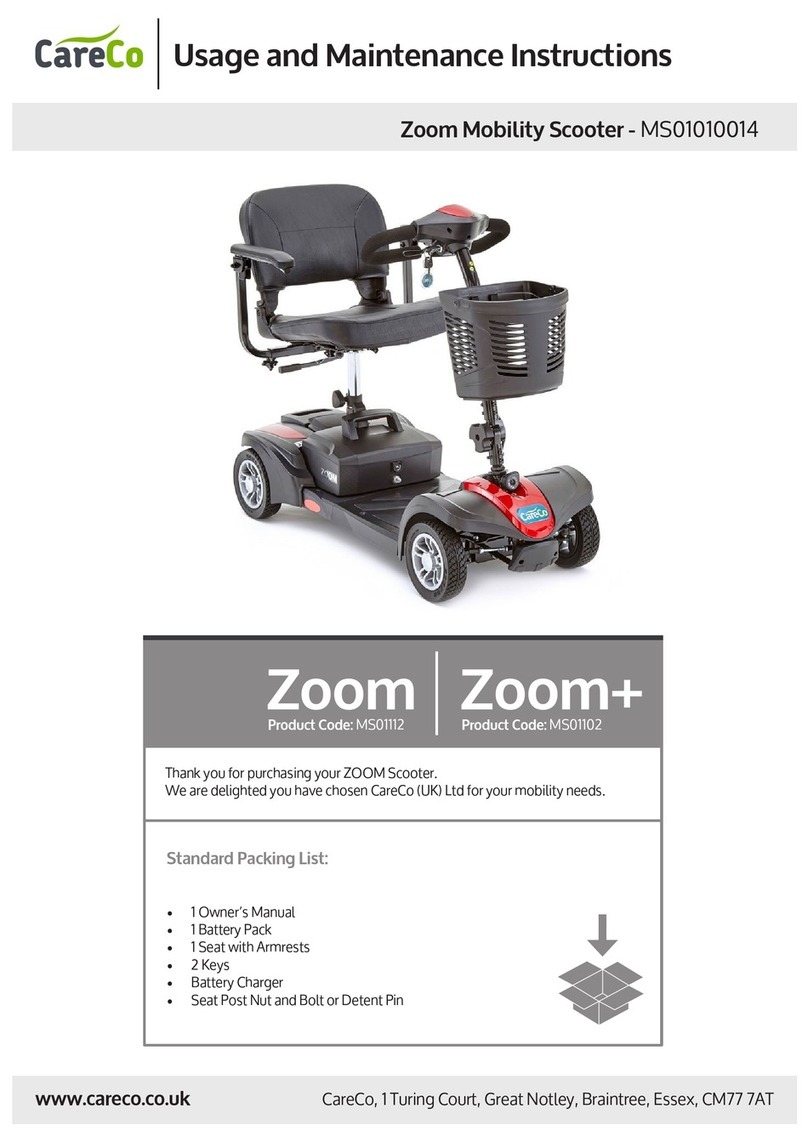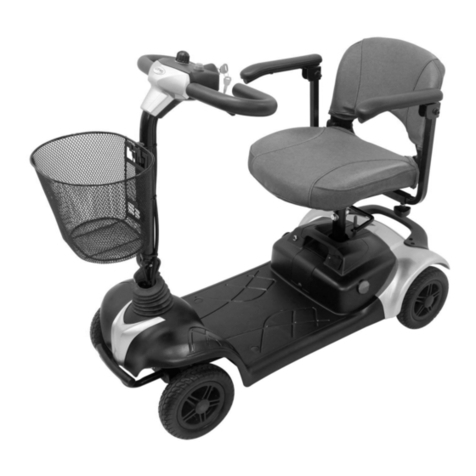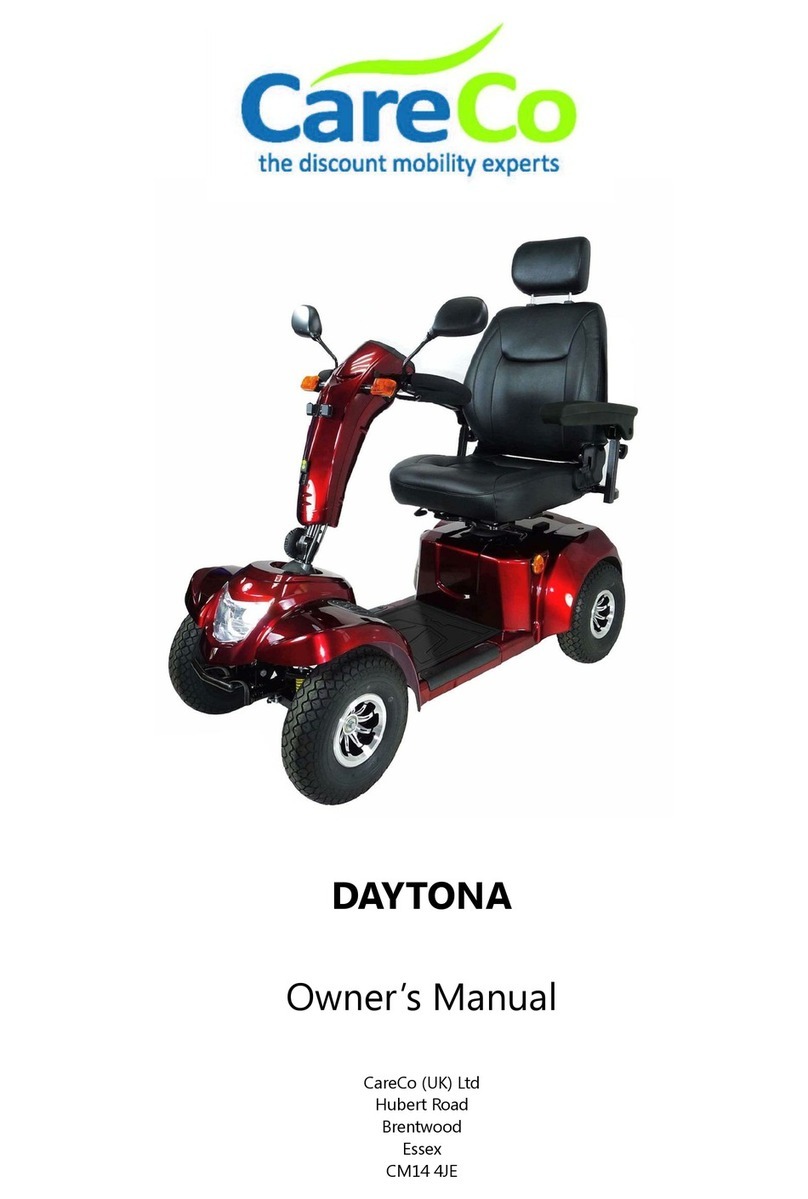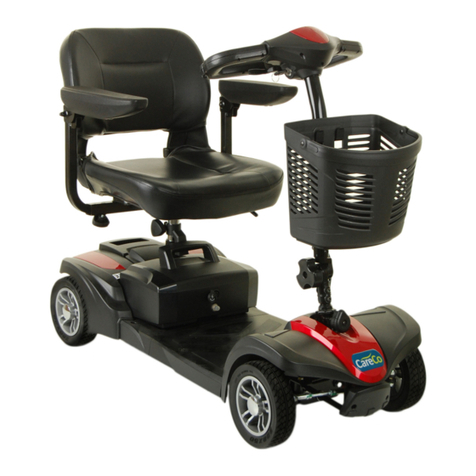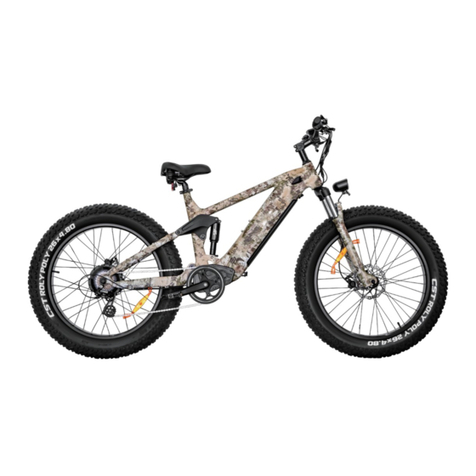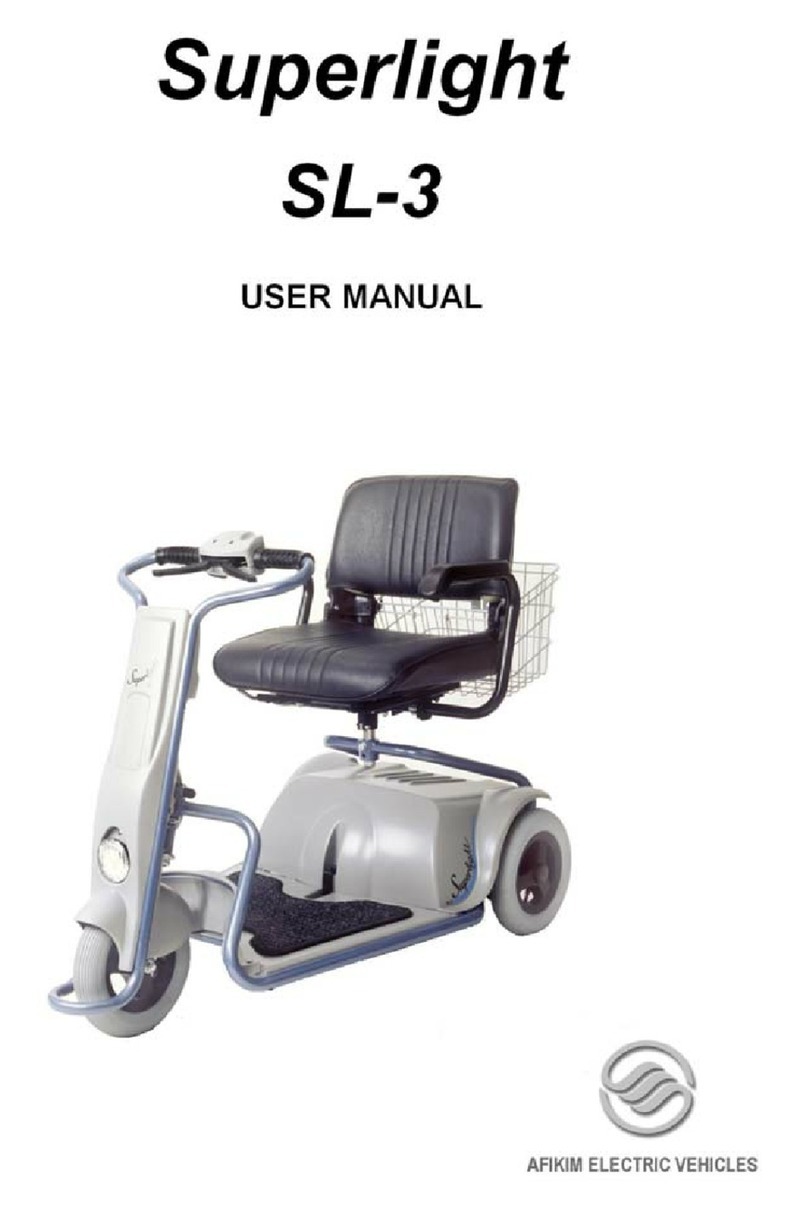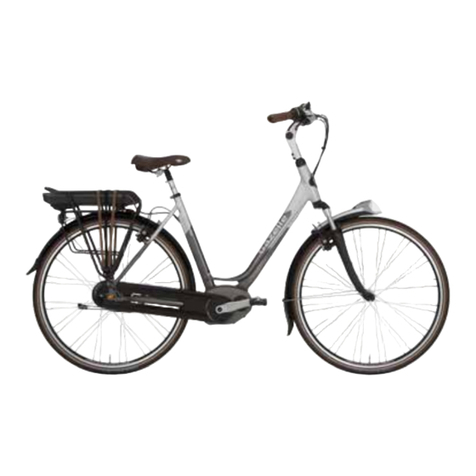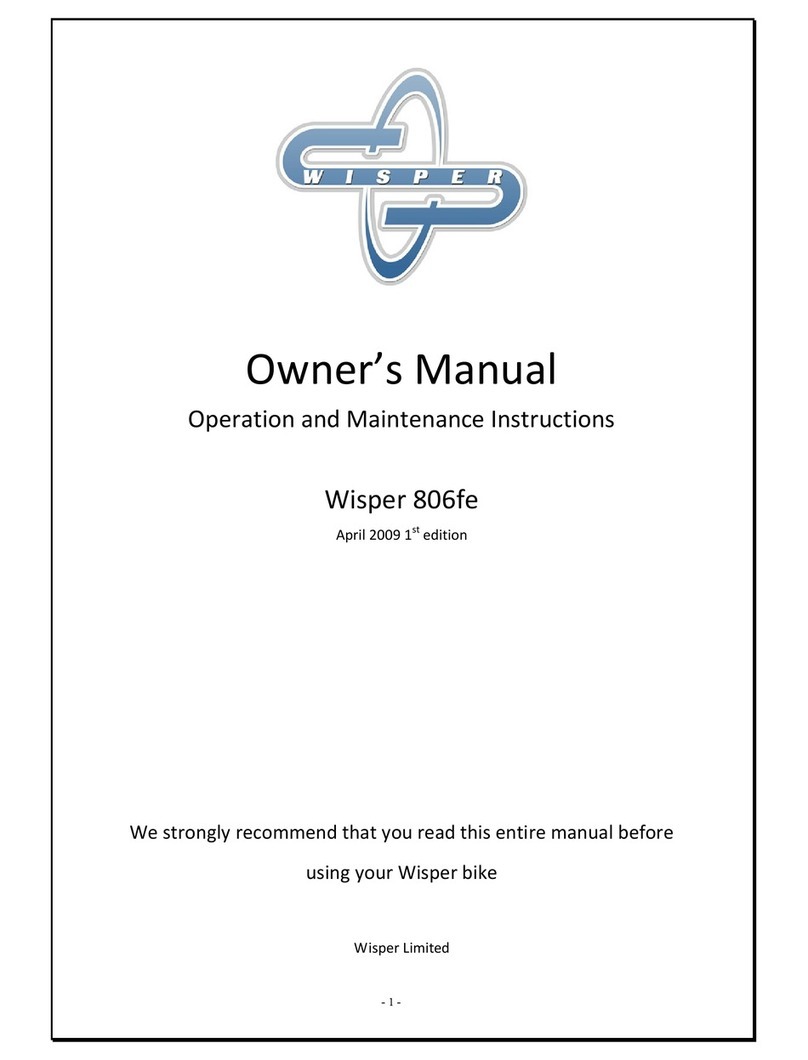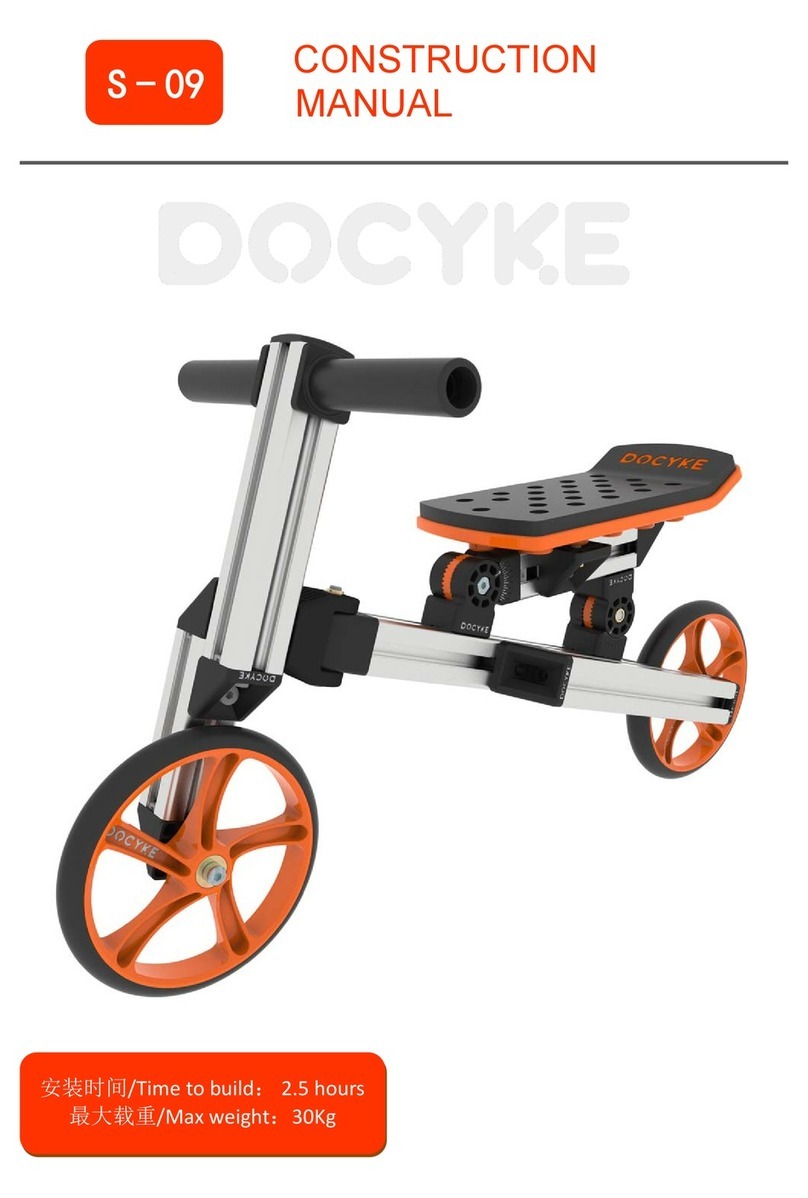
2. IMPORTANT PRECAUTIONS
The sources of radiated EMI can be broadly classied into three types:
1. Hand-held portable transceivers (transmitters-receivers) with the antenna mounted directly on
the transmitting unit. Examples include: citizens band (CB) radios, “walkie talkie,” security, re,
and police transceivers, mobile phones, and other personal communication devices.
Mobility Scooter Electromagnetic Interference:
Because EM energy rapidly becomes more intense as one move closer to the transmitting antenna
(source), the EM elds from hand-held radio wave sources (transceivers) are of special concern. It is
possible to unintentionally bring high levels of EM energy very close to the motorized scooter control
system while using these devices. This can aect mobility scooter movement and braking. Therefore,
the warnings listed below are recommended to prevent possible interference with the control
system of the mobility scooter.
Warnings:
Electromagnetic interference (EMI) from sources such as radio and TV stations, amateur radio
(HAM) transmitters, two-way radios, and mobile phones can aect mobility scooters. Following the
warnings listed below should reduce the chance of unintended brake release or mobility scooter
movement which could result in serious injury.
1. Do not operate hand-held transceivers (transmitters-receivers), such as citizens band (CB) radios,
or turn ON personal communication devices, such as mobile phones, while the mobility scooter
is turned ON;
2. Be aware of nearby transmitters, such as radio or TV stations, and try to avoid coming close to
them;
3. If unintended movement or brake release occurs, turn the mobility scooter OFF as soon as it is
safe;
4. Be aware that adding accessories or components, or modifying the mobility scooter, may make it
more susceptible to EMI; and
5. Report all incidents of unintended movement or brake release to the distributor listed on the
inside front cover of this manual. Note whether there is a source of EMI nearby.
2. Medium-range mobile transceivers, such as those used in police cars, re trucks, ambulances,
and taxis. These usually have the antenna mounted on the outside of the vehicle; and
3. Long-range transmitters and transceivers such as commercial broadcast transmitters (radio and
TV broadcast antenna towers) and amateur (HAM) radios.
8
Some mobile phones and similar devices transmit signals while they are ON, even
when not being used
Other types of hand-held devices, such as cordless phones, laptop computers, AM/FM
radios, TV sets, CD players, and cassette players, and small appliances, such as electric
shavers and hair dryers, so far as we know, are not likely to cause EMI problems to
your mobility scooter.
There is no easy way to evaluate their eect on the overall immunity of the
mobility scooter.
